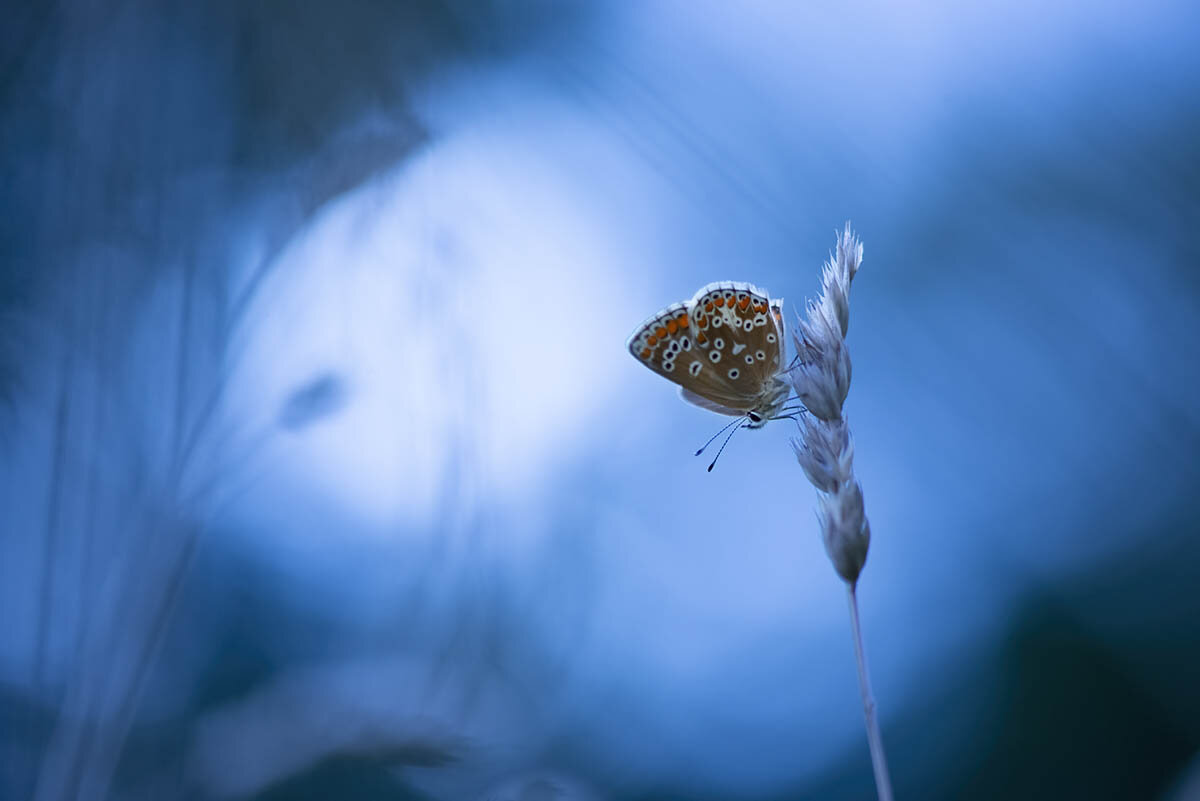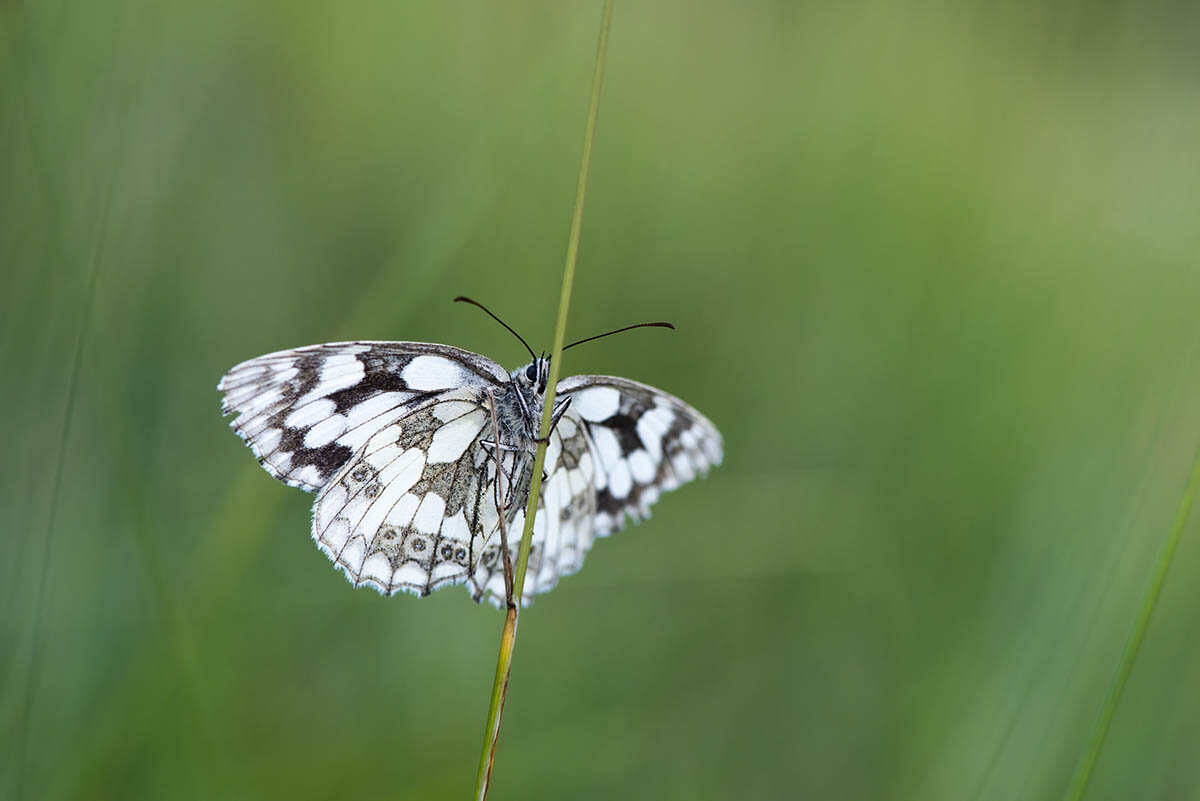Butterflies Under Pressure?
Butterflies Under Pressure?
by
Rob Read
Above: A Common Blue taken in a garden, part of which had been rewilded. ©Rob Read.
Back in July I wrote a piece about the Big Butterfly count in the UK, a huge citizen science project coordinated by Butterfly Conservation who asked us all to count the butterflies in our gardens or during a local walk. A few months on and the results will shortly be published, although a few headline grabbers have already surfaced including the rather worry statistic that average recorded species numbers per person are down from 11 to 9, with species including the Small Tortoiseshell and Peacock declining markedly.
While headlines like this certainly get the attention of the media, I heard a feature on it a couple of week ago on BBC Radio 4 for example, it will be interesting to study the complete report in detail to get a bigger picture. Although there is no doubt that our butterfly populations are under serious threat, fluctuation in numbers from one year to the next is not an accurate measure, it is the trend over a longer period which is the more important metric.
The springs of 2020 and 2021 could not have been more different. Those of us in the UK will remember a long period of warm and sunny weather during the lockdown spring of 2020. Compare this to the cold and wet weather of the same period earlier this year. That undoubtedly would have affected the survival of many butterfly species in various stages of their life cycles. Consider also the reliability of the data submitted by the citizen scientists themselves. How many of us can attest to being able to accurately identify every species, especially when seen at a distance. How many of the blue butterflies would have been lumped into the ‘Common Blue’ pile; were the majority of the whites recorded as Large White when perhaps other white species where present and went unrecorded? You can see how all this could fluctuate from year to year and why a longer term trend is more useful.
Personally, I have enjoyed quite a good year with the butterflies in my local area. As well as good numbers of the common species appearing in my garden which enjoyed the new wildflower meadow, there have been sightings of some rarities too. Wild Read contributor and fellow villager Ben Kite instigated to seeding of numerous wildflower patches across the village. In the summer he recorded a sighting of a Brown Hairstreak in the patch opposite my house. Shortly after, we both went in search (unsuccessfully) of Autumn Lady’s Tresses and spotted Wall Brown, a butterfly I haven’t seen for a year or two.
As I mentioned earlier, there is no doubt that our butterfly populations are suffering a worryingly downward trend. You can help by setting aside parts of your gardens to grow wild, sowing native wildflower seed this autumn will help things become established – make sure you pick a mix suitable for your soil type. Maybe you could also persuade your local parish council to rewild some of the communal areas too? Sowing wildflower seeds would certainly have benefits, but this does take a bit of coordinated effort to organise. Leaving verges and other usually mown areas uncut is enough to encourage a little more biodiversity as it not only encourages butterflies, but all sorts of other invertebrates too – the very building blocks of an ecosystem. Just think if everyone did this how much of a cumulative effect it would have?
I’ll leave you with that positive thought and a couple of images I managed to take over the summer. If the sun shines over the next week or two, make sure you get out and about and enjoy the last few sightings of our butterflies before the chill of autumn claims them for another year.
Rob Read. October 2021.
Above: A Marbled White on the chalk downlands of Wiltshire. ©Rob Read



